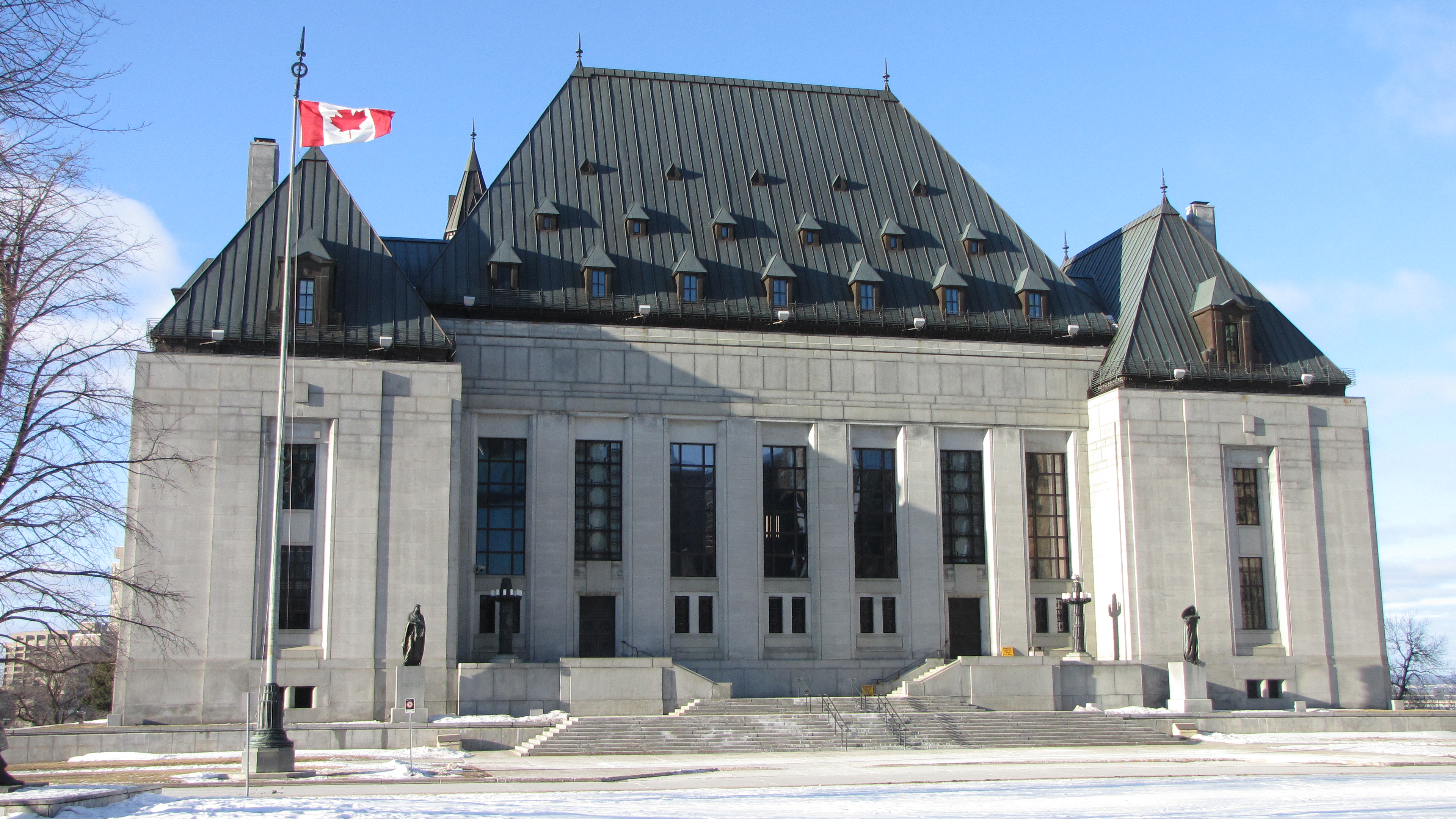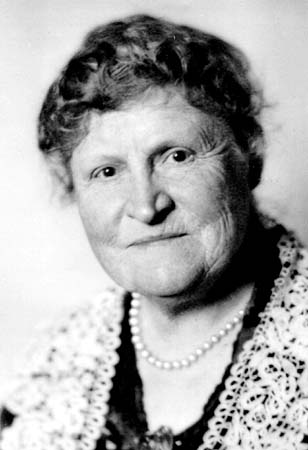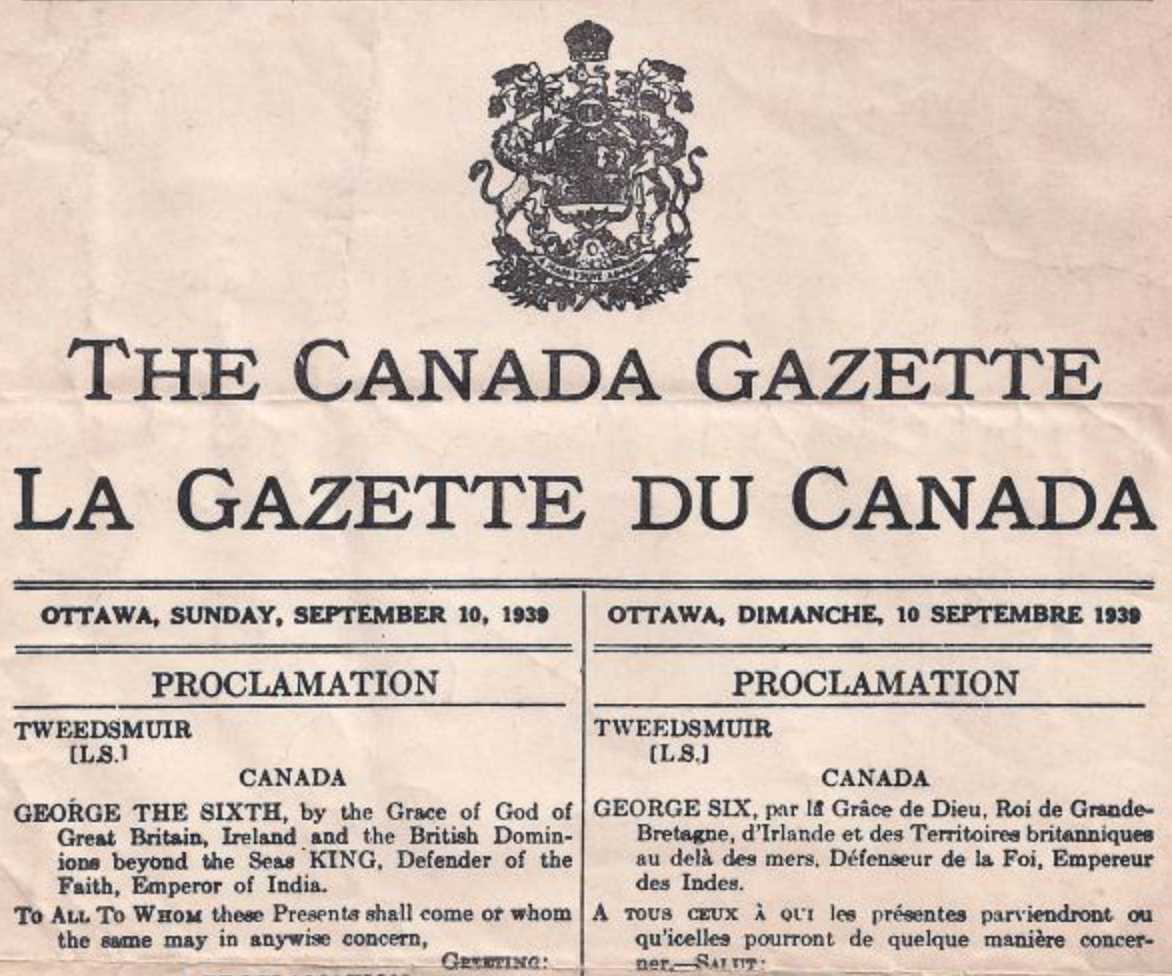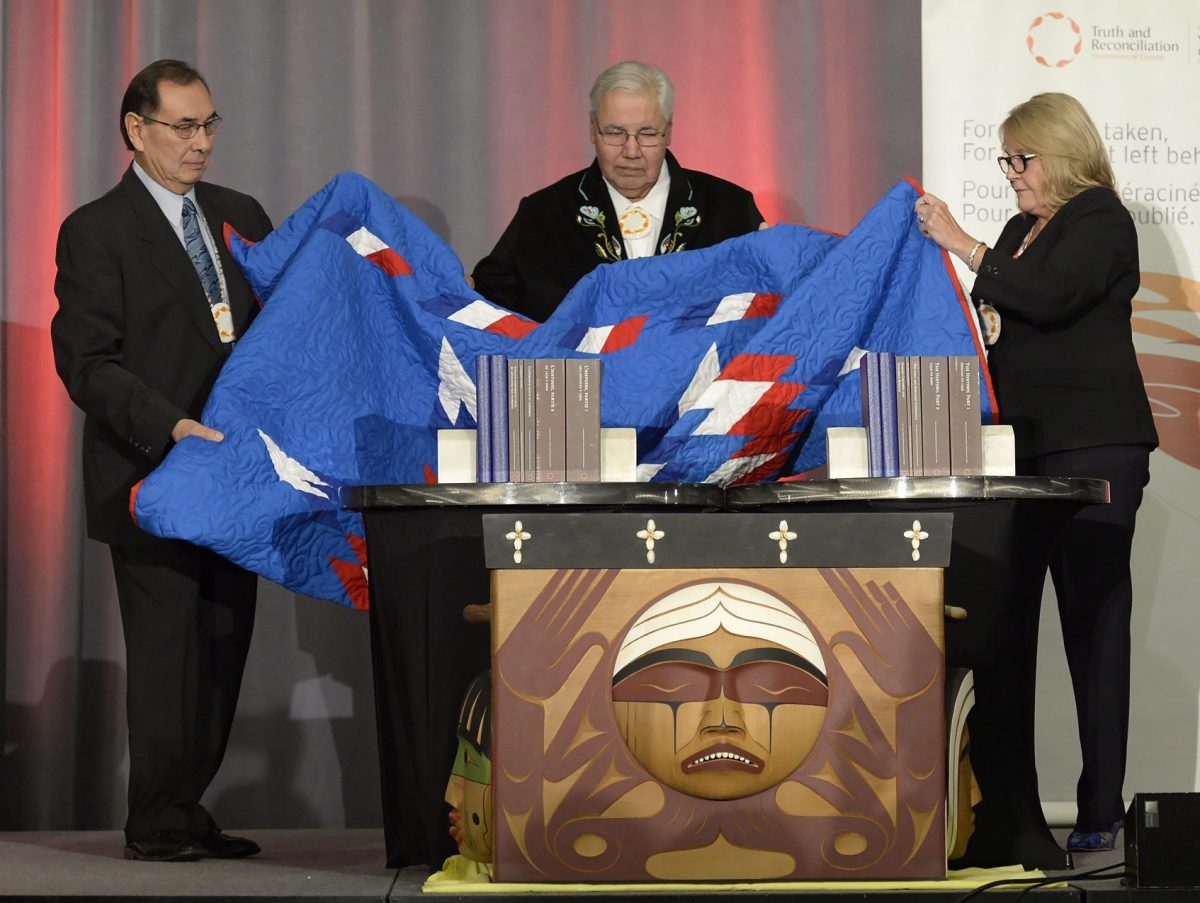Thesis
Canada's journey to maturity was a dual process: while landmark events forged a politically independent nation on the world stage, it was the internal battles for rights and recognition that truly shaped the complex, self-critical, and evolving character of modern Canadian identity.

World War I
1914-1918

The Persons Case
1929

Declaration of War
1939

World War II
1939-1945

Post-War Era
1945-1980

October Crisis
1970

Truth & Reconciliation
2008-2015
The Persons Case, 1929
Analysis
After World War I, Canadian women had won the right to vote, but they were still blocked from many areas of public life, including the Senate. The issue was the British North America Act of 1867, Canada's founding legal document. It stated that only "qualified persons" could be appointed to the Senate, and the Supreme Court of Canada ruled in 1928 that this term meant "men only" (Cruickshank, 2024). A group of determined activists known as the "Famous Five"—Emily Murphy, Nellie McClung, Henrietta Muir Edwards, Louise McKinney, and Irene Parlby—refused to accept this. They took their case to Canada's highest court of appeal at the time, the Judicial Committee of the Privy Council in London. In a historic 1929 decision, the Council reversed the Canadian court's ruling. It famously stated that excluding women was a "relic of days more barbarous" and introduced the idea of the constitution as a "living tree," meaning it must grow and adapt with society (Sharpe & McMahon, 2007). This victory was a key moment in Canada's social development, showing that citizens could use the legal system to change the nation's most important laws.
Image Carousel
Perspective: The Famous Five
(Hover or Tap to see details)
"They argued that for Canada to mature, it must recognize all its citizens as full persons. Nellie McClung famously said, 'The purpose of a woman's life is just the same as the purpose of a man's life: that she may make the best possible contribution to her generation' (as cited in Foster, n.d.)."
Critical Perspective: Indigenous Exclusion
(Hover or Tap to see details)
"This victory for 'personhood' did not extend to everyone. At the time, Indigenous women were systematically denied the vote and other rights available to white women under the Indian Act, which enforced a patriarchal system that stripped them of their status if they married non-status men (Palmater, 2011)."
Historical Thinking Concepts
Historical Significance
Ethical Dimension
Declaration of War, 1939
Analysis
When World War I began in 1914, Canada's entry was automatic, a direct result of its place in the British Empire. The year 1939 was completely different. Thanks to the new legal freedom granted by the Statute of Westminster in 1931, Canada was no longer required to follow Britain's lead (Hillmer, 2021). Prime Minister W. L. Mackenzie King made a powerful symbolic move. He waited a full week after Britain declared war on Germany before calling a special session of the Canadian Parliament to hold a separate debate and vote. This deliberate delay was a clear demonstration of Canada's "coming of age" on the international stage. Although there was little doubt Canada would support the war, the process itself sent a strong message: Canada was now a sovereign nation making its own decisions about war and peace, not a colony answering a summons (Granatstein, 2005). It was a definitive performance of independence for the whole world to see.
Image Carousel
Perspective: Political Autonomy
(Hover or Tap to see details)
From Mackenzie King's viewpoint, this was the ultimate validation of the Statute of Westminster. It was a performance of independence for a global audience, proving Canada was no longer a subordinate. This act solidified Canada's separate voice in international affairs (Granatstein, 2007).
Perspective: Lingering Loyalty
(Hover or Tap to see details)
For many English Canadians and veterans, the decision was a foregone conclusion driven by deep loyalty to Britain. The debate wasn't 'if' Canada should join, but 'how.' This shows that while politically independent, Canada's cultural identity was still strongly tied to the 'mother country' (Morton, 1999).
Historical Thinking Concepts
Cause and Consequence
Historical Significance
The October Crisis, 1970
Analysis
The October Crisis of 1970 was a defining moment that tested Canadian democracy and national unity. The crisis began after years of growing nationalist feeling in Quebec during the "Quiet Revolution," which saw the province modernize and assert its distinct identity. A radical separatist group, the Front de libération du Québec (FLQ), used terrorism to try to achieve an independent Quebec. In October 1970, the FLQ kidnapped British diplomat James Cross and Quebec's Minister of Labour, Pierre Laporte (Jenish, 2021). In a shocking response, Prime Minister Pierre Trudeau invoked the War Measures Act, a law never before used during peacetime. This act suspended civil liberties, allowing police to arrest and detain nearly 500 people—mostly artists, intellectuals, and activists—without charge (Glover, 2021). When Pierre Laporte was later found murdered, the nation was gripped by fear and division. The crisis forced a painful national debate about balancing security with freedom, and what it means to be a united country.
Interactive Timeline of Key Events
Oct 5
Kidnapping of James Cross
Oct 10
Kidnapping of Pierre Laporte
Oct 16
War Measures Act invoked
Oct 17
Laporte's body found
Perspective: Federal Government
(Hover or Tap to see details)
Prime Minister Trudeau saw the FLQ's actions as a direct attack on Canadian democracy, calling it an "apprehended insurrection." His famous quote, "Just watch me," showed his belief that strong, decisive action was needed to protect the country, even if it meant temporarily suspending civil rights (English, 2009).
Perspective: Civil Libertarians
(Hover or Tap to see details)
Critics, including NDP leader Tommy Douglas, argued that using the War Measures Act was a dangerous overreach. Douglas famously accused the government of using a "sledgehammer to crack a peanut" and worried it would set a dangerous precedent for the future of Canadian freedoms (Jenish, 2010).
Key Locations Map
Historical Thinking Concepts
Cause and Consequence
Historical Perspective
Truth & Reconciliation, 2008-2015
Analysis
The Truth and Reconciliation Commission (TRC) represents one of the most significant and difficult "coming of age" moments in modern Canadian history. Launched in 2008, its purpose was to document the history and lasting harm of the country's residential school system. For over a century, this system forcibly removed Indigenous children from their families in an attempt to assimilate them into Euro-Canadian culture, a process the TRC's final report identified as "cultural genocide" (Truth and Reconciliation Commission of Canada, 2015). The TRC gave a national platform to thousands of survivors who shared their stories of abuse, trauma, and cultural loss. This process forced Canada to confront a dark part of its history that had been largely ignored. The TRC's final report in 2015, which included 94 Calls to Action, challenged the myth of Canada as a purely benevolent nation. It began the arduous process of redefining Canada's identity as one that must confront its colonial past to build a more just future.
Image Carousel
Perspective: Survivors
(Hover or Tap to see details)
For survivors, the TRC was a long-overdue opportunity to have their truths heard and officially acknowledged. As TRC Chair Murray Sinclair stated, education is key to this process: "Education got us into this mess and education will get us out of it" (as cited in National Centre for Collaboration in Indigenous Education, n.d.).
Perspective: Non-Indigenous Canadians
(Hover or Tap to see details)
For many, the TRC was a shocking education. It dismantled the myth of Canada as a purely benevolent nation and forced a confrontation with its colonial foundations. This perspective shift is crucial for understanding what "reconciliation" requires from all Canadians (Saul, 2014).
Embedded Media
Historical Thinking Concepts
Ethical Dimension
Continuity and Change
World War I, 1914-1918
Analysis
World War I marked Canada's first major step toward independence and national identity on the world stage. When Britain declared war on August 4, 1914, Canada was automatically pulled into the conflict as a Dominion of the British Empire. However, this war would prove to be the crucible that forged a distinct Canadian identity. Over 650,000 Canadians served in the Canadian Expeditionary Force (CEF), with nearly 66,000 making the ultimate sacrifice (Veterans Affairs Canada, 2024). The defining moment came at the Battle of Vimy Ridge in April 1917, where all four Canadian divisions fought together for the first time and achieved what British and French forces could not—capturing the strategic ridge (Cook, 2023). This victory became a symbol of Canadian military prowess and unity. Prime Minister Robert Borden used Canada's wartime contributions to demand separate representation at the Treaty of Versailles, making it the first international document Canada signed independently of Britain (Hillmer, 2022). As one source notes (History Crunch, 2021), this was "a moment that many now look to as the country's independence from British control."
Perspective: English Canada
(Hover or Tap to see details)
English Canadians largely supported the war effort, viewing it as a duty to the British Empire. Many volunteers were recent British immigrants who felt strong loyalty to the "mother country." The war was seen as an opportunity to prove Canadian valor and earn respect on the world stage.
Perspective: French Canada
(Hover or Tap to see details)
French Canadians were less enthusiastic about the war, viewing it as a British conflict. The Conscription Crisis of 1917 deeply divided the country when Quebec opposed forced military service, leading to riots and lasting tensions between English and French Canada (Foot, 2021).
Perspective: Indigenous Canadians
(Hover or Tap to see details)
Over 4,000 Indigenous Canadians enlisted despite not having citizenship or voting rights. Many saw military service as a path to recognition and equality. However, they returned to continued discrimination and were often denied veterans' benefits available to other soldiers (Winegard, 2021).
Historical Thinking Concepts
Historical Significance
Continuity and Change
World War II, 1939-1945
Analysis
World War II solidified Canada's emergence as a fully sovereign nation and a significant middle power on the world stage. Unlike WWI, Canada entered this conflict through its own parliamentary decision, demonstrating the independence gained since 1914 (Foot & Dupuis, 2022). Over 1.1 million Canadians served, with the country making crucial contributions on multiple fronts: the Battle of the Atlantic, the Italian Campaign, D-Day at Juno Beach, and the liberation of the Netherlands (Foot & Dupuis, 2022). Canada's industrial capacity transformed the nation into the "Arsenal of Democracy" (Marsh, 2021), producing ships, aircraft, and munitions for the Allied cause. The war also marked significant social changes—women entered the workforce in unprecedented numbers, and Canada welcomed thousands of war brides. However, the conflict also revealed Canada's darker impulses with the internment of Japanese Canadians and the turning away of Jewish refugees (Robinson, 2023; Peden, 2023). By war's end, Canada had earned its place among the founding members of NATO and the United Nations, cementing its role as a middle power committed to multilateralism and peacekeeping (Foot & Dupuis, 2022).
Perspective: Canadian Military
(Hover or Tap to see details)
Canadian forces proved their effectiveness across multiple theaters. From the disaster at Dieppe to triumph at Juno Beach, Canadian soldiers, sailors, and airmen demonstrated courage and competence (Foot & Dupuis, 2022). The war established Canada's military reputation and its commitment to collective security through NATO.
Perspective: Canadian Women
(Hover or Tap to see details)
WWII opened unprecedented opportunities for women in the workforce, military, and society. "Rosie the Riveter" became a Canadian reality as women took on roles previously reserved for men (Foot & Dupuis, 2022). Though many returned to domestic roles post-war, the foundation for future women's rights movements was laid.
Perspective: Japanese Canadians
(Hover or Tap to see details)
More than 22,000 Japanese Canadians were forcibly relocated and interned, losing their homes, businesses, and civil rights (Robinson, 2023). This injustice, driven by wartime hysteria and racism, represents one of Canada's darkest chapters and a reminder that democratic values can be fragile during times of crisis.
Historical Thinking Concepts
Cause and Consequence
Ethical Dimension
Post-War Era, 1945-1980
Analysis
The post-war era marked Canada's full maturation as a sovereign nation and its emergence as a confident middle power on the world stage. This period saw the completion of Canada's constitutional independence with the adoption of the new Canadian flag in 1965, symbolically breaking the last visual ties to Britain. Under leaders like Lester B. Pearson and Pierre Trudeau, Canada developed its distinctive foreign policy approach of "quiet diplomacy" and peacekeeping. Pearson's Nobel Peace Prize for resolving the Suez Crisis in 1956 established Canada's reputation as an honest broker in international conflicts (Bothwell, 2023). Domestically, this era witnessed the creation of universal healthcare (Maioni, 2024), the Official Languages Act, and the policy of multiculturalism (Poli, 2023)—all defining features of modern Canadian identity. The period also saw significant social changes: the Quiet Revolution in Quebec, the rise of Quebec nationalism, and growing recognition of Indigenous rights. Immigration patterns shifted from Europe to Asia, Africa, and Latin America, fundamentally changing Canada's demographic composition and reinforcing its multicultural character.
Perspective: English Canada
(Hover or Tap to see details)
English Canada embraced the new flag and symbols of Canadian identity while adapting to official bilingualism. Many saw peacekeeping and multiculturalism as distinctly Canadian values that differentiated the country from both Britain and the United States.
Perspective: Quebec
(Hover or Tap to see details)
The Quiet Revolution transformed Quebec from a traditional, church-dominated society to a modern, secular one (Behiels, 1985). Official bilingualism was welcomed, but growing nationalism led to demands for greater autonomy and eventually the sovereignty movement of the 1970s.
Perspective: New Canadians
(Hover or Tap to see details)
The shift from assimilation to multiculturalism was revolutionary for immigrants. The 1971 Multiculturalism Policy encouraged newcomers to maintain their cultural heritage while becoming Canadian, creating a unique model of integration that influenced immigration worldwide (Poli, 2023).
Historical Thinking Concepts
Historical Significance
Continuity and Change
References
- Behiels, M. D. (1985). *Prelude to Quebec's Quiet Revolution: Liberalism versus Neo-nationalism, 1945-1960*. McGill-Queen's University Press.
- Bothwell, R. (2023). *Lester B. Pearson*. In *The Canadian Encyclopedia*. Historica Canada. Retrieved from https://www.thecanadianencyclopedia.ca/en/article/lester-bowles-pearson
- Cook, T. (2023). *Battle of Vimy Ridge*. In *The Canadian Encyclopedia*. Historica Canada. Retrieved from https://www.thecanadianencyclopedia.ca/en/article/vimy-ridge
- Cruickshank, D. A. (2024). *Persons case*. In *The Canadian Encyclopedia*. Historica Canada. Retrieved from https://www.thecanadianencyclopedia.ca/en/article/persons-case
- English, J. R. (2009). *Just watch me: The life of Pierre Elliott Trudeau, 1968-2000*. Alfred A. Knopf Canada.
- Foot, R. (2021). *Conscription in Canada*. In *The Canadian Encyclopedia*. Historica Canada. Retrieved from https://www.thecanadianencyclopedia.ca/en/article/conscription
- Foot, R., & Dupuis, M. (2022). *Canada and the Second World War*. In *The Canadian Encyclopedia*. Historica Canada. Retrieved from https://www.thecanadianencyclopedia.ca/en/article/second-world-war-wwii
- Foster, L. (n.d.). *The Persons Case and women's right to vote in Canada*. York University. Retrieved from http://www.yorku.ca/lfoster/2006-07/sosi4440b/lectures/ThePersonsCaseandWomensRighttoVoteinCanada.htm
- Glover, F. (2021). *October Crisis*. In *The Canadian Encyclopedia*. Historica Canada. Retrieved from https://www.thecanadianencyclopedia.ca/en/article/october-crisis-plain-language-summary
- Granatstein, J. L. (2005). *Arming the nation: Canada's industrial war effort, 1939-1945*. Canadian Council of Chief Executives.
- Granatstein, J. L. (2007). *Canada's army: Waging war and keeping the peace*. University of Toronto Press.
- Hillmer, N. (2021). *Canada's declaration of Second World War*. In *The Canadian Encyclopedia*. Historica Canada. Retrieved from https://www.thecanadianencyclopedia.ca/en/article/canadas-declaration-of-second-world-war
- Hillmer, N. (2022). *Treaty of Versailles*. In *The Canadian Encyclopedia*. Historica Canada. Retrieved from https://www.thecanadianencyclopedia.ca/en/article/treaty-of-versailles
- History Crunch. (2021). *Canada in World War I*. Retrieved from https://www.historycrunch.com/canada-in-world-war-i.html
- Jenish, D. (2010, September 14). The October Crisis. *Legion Magazine*.
- Jenish, D. (2021). *October Crisis*. In *The Canadian Encyclopedia*. Historica Canada. Retrieved from https://www.thecanadianencyclopedia.ca/en/article/october-crisis
- Maioni, A. (2024). *Health Policy*. In *The Canadian Encyclopedia*. Historica Canada. Retrieved from https://www.thecanadianencyclopedia.ca/en/article/health-policy
- Marsh, J. H. (2021). *"Arsenal of Democracy"*. In *The Canadian Encyclopedia*. Historica Canada. Retrieved from https://www.thecanadianencyclopedia.ca/en/article/arsenal-of-democracy
- Morton, D. (1999). *A military history of Canada*. McClelland & Stewart.
- National Centre for Collaboration in Indigenous Education. (n.d.). *Reconciliation and NCCIE*. Retrieved from https://www.nccie.ca/reconciliation-and-nccie/
- Palmater, P. D. (2011). *Beyond blood: Rethinking Indigenous identity*. Purich Publishing.
- Peden, A. (2023). *MS St. Louis*. In *The Canadian Encyclopedia*. Historica Canada. Retrieved from https://www.thecanadianencyclopedia.ca/en/article/ms-st-louis
- Poli, F. (2023). *Multiculturalism in Canada*. In *The Canadian Encyclopedia*. Historica Canada. Retrieved from https://www.thecanadianencyclopedia.ca/en/article/multiculturalism
- Robinson, G. (2023). *Internment of Japanese Canadians*. In *The Canadian Encyclopedia*. Historica Canada. Retrieved from https://www.thecanadianencyclopedia.ca/en/article/internment-of-japanese-canadians
- Saul, J. R. (2014). *The comeback: How Aboriginals are reclaiming power and influence*. Penguin Canada.
- Sharpe, R. J., & McMahon, P. (2007). *The Persons Case: The origins and legacy of the fight for legal personhood*. University of Toronto Press for The Osgoode Society for Canadian Legal History.
- Truth and Reconciliation Commission of Canada. (2015). *Honouring the truth, reconciling for the future: Summary of the final report of the Truth and Reconciliation Commission of Canada*.
- Veterans Affairs Canada. (2021). *Canada and the Second World War*. Retrieved from https://www.veterans.gc.ca/eng/remembrance/history/second-world-war
- Veterans Affairs Canada. (2024, February 21). *The First World War (1914 - 1918)*. https://www.veterans.gc.ca/eng/remembrance/history/first-world-war
- Winegard, T. C. (2021). *Indigenous Peoples and the World Wars*. In *The Canadian Encyclopedia*. Historica Canada. Retrieved from https://www.thecanadianencyclopedia.ca/en/article/indigenous-peoples-and-the-world-wars












